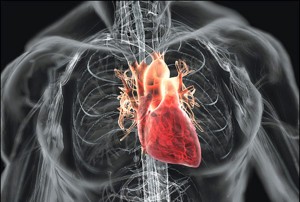The Cardiovascular System
Updated May, 2022
*The signature physiologic consequence of air pollution is the same as cigarette smoke: a low grade arterial inflammation, arteriolar narrowing, and vascular prothrombotic changes. Chemical markers of these changes are found even in young healthy adults. As with cigarette smoke the effect can be almost immediate and chronic exposure to even low concentrations of pollution are associated with an acceleration of atherosclerosis, damage to the endothelium of blood vessels, and significant arteriolar narrowing and stiffness. Breathing more ozone in childhood increases arterial wall thickness in young adults.
*Simultaneously high concentrations of multiple pollutants have a synergistic effecton hospitalizations for cardiac disease.
*Air pollution causes average blood pressure to increase within minutes. All organs are affected. Blood pressure rises are found in even in children and from prenatal exposure.
*Air pollution can alter electrical signaling within the heart, starting as early as infancy. Rates of arrhythmias, heart attacks and strokes increase with air pollution and are the primary cause for increased community mortality rates. Those rates correspond to hourly pollution concentrations and stay elevated for as long as 30 days after the exposure has ended.
*In patients who suffer from heart failure, air pollution reduces cardiac function. Even in patients without known heart disease, air pollution increases the size of heart chambers, indicative of impaired function, a precursor of heart failure.
*Particulate pollution concentrations typical of the Wasatch Front increase mortality rates about 10% according to the formula recommended by the *Particulate pollution concentrations typical of the Wasatch Front increase mortality rates about 10% according to the formula recommended by the American Heart Association published in May, 2010. Ozone causes further increase in mortality, although less than particle matter. That means between 1,000 and 2,000 Utahns die prematurely every year due to our air pollution. Approximately 210,000 premature deaths occur annually in the US from combustion emissions. The average pollution related premature death represents about ten years of lost life.
*Particulate pollution from coal and diesel combustion are likely much more potent in triggering heart and vascular disease than most other sources.
*Mortality plotted against air pollution concentrations shows no safe threshold, even at low levels, well below EPA national ambient air quality standards (NAAQS). Furthermore this curve is not linear. The steepest part of the curve is at low doses, i.e. small air pollution reductions have even greater public health benefit when the concentrations are already low. Even at what are considered ‘background’ levels of particulate pollution there are increased risks for cardiopulmonary mortality compared to clean, filtered air. Nearly all the mortality caused by air pollution occurs in cities and towns that meet the EPA’s national air quality standards.
*Air pollution impairs exercise capability, even in the very fittest of individuals. Even in young, healthy adults air pollution increases biomarkers of inflammation and thrombosis and increases blood pressure and heart rate. Air pollution offsets the cardiorespiratory benefits of exercise.
*Air pollution shortens life expectancy and accelerates the aging process. The residents of the average American city lose 1-3 years of life expectancy, in Northern China residents lose 5.5 years.
*The increase in mortality risk persists for decades after exposure.
*There are very likely genetic differences in human susceptibility to the arterial inflammation provoked by air pollution. Furthermore, the progression of inflammation and cardiovascular changes are more pronounced in those who are already at higher risk.
*Inhaled nanoparticles preferentially lodge in the lining of blood vessels where inflammation and atherosclerosis already exist, and they can remain there for months, and perhaps much longer. Particle pollution also lodges in heart tissue, in astonishing amounts–billions of particles per gram of heart tissue.
*Air pollution alters the blood lipid profile, decreasing HDL levels.
*Black Americans suffer greater cardiovascular impacts from air pollution than caucasians.
*Radioactive isotopes attached to particulate pollution carry additional cardiovascular risks.
*Preconception air pollution exposure impairs the normal development of the heart in animals.






